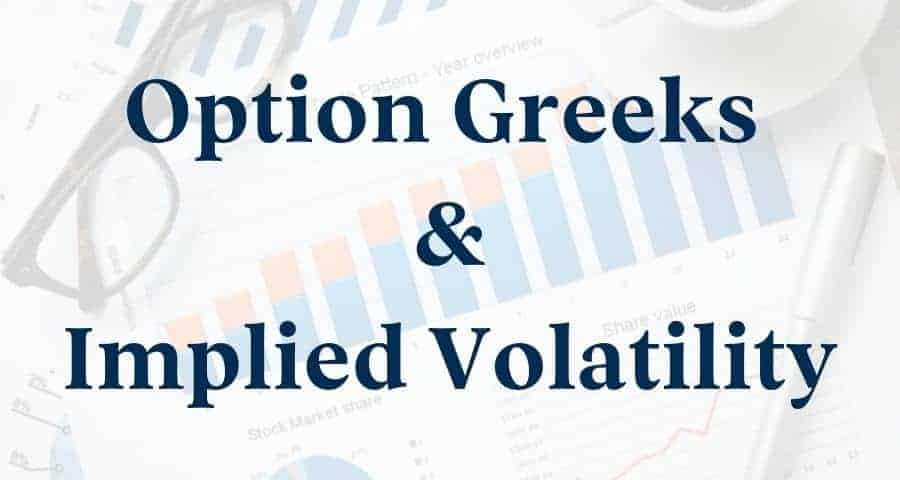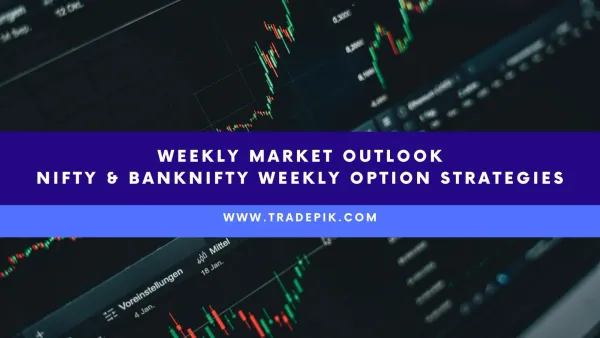Option Greeks and Implied Volatility - Free Guide

In Option trading, it is best to get a good grasp of the concepts that are associated with the process of Option trading itself. This is because two terms “Option Greeks and Implied Volatility” will influence the option price every time you trade. The examples and scenarios given in this article are what are known as ideal world scenarios and instances, and in actual market conditions, there will be considerable variation from the ideal world scenario!
Option Greeks:
The Greeks are a set of statistical values that offer the investor an enhanced comprehensive view of option premiums change when the changes in pricing model inputs are known. Such values can determine the options strategies that can be used. The investor should also keep in mind that statistics display trends that are based on previous performance. Also noteworthy is the fact that future stock performance isn’t guaranteed and the behavior depends on historical numbers to a large extent. Such trends often change dramatically depending on stock performance.
Delta is said to be the metric that measures the relationship between an option premium and the underlying stock price.
Gamma is the sensitivity of Delta to a one-unit change in the underlying. Gamma indicates an absolute change in Delta. For example, a Gamma of 0.150 indicates the Delta increases or decreases by 0.150 if the underlying price increases or decreases by $1.00. Results will usually not be exact.
Beta is a metric that determines how close the movement of a particular stock tracks the movement of the whole stock market.
Theta is the metric that measures the sensitivity of an option’s premium to the fluctuation or change in time. This is said to indicate an absolute change in option value for a one-unit reduction in time until the expiration. This variable can be indicated either as a 1-day to 7-day metric. For instance, a Theta of -.035 shows the option’s theoretical value changes by -.035 if the number of days reduces by seven. The results obtained herein may not be exact values due to rounding off. One also has to remember that a 7-day Theta will change right to one day Theta if the days to expiration are seven or less, and this is known as Time decay.
Rho is the metric that measures the sensitivity of option value to the fluctuation in an interest rate. It shows the absolute change in option value for a 1% fluctuation in the interest rate. For instance, a Rho of .070 shows the option’s theoretical value rises by 0.070 if the interest rate reduces by 1.0. The results are not expected to be of exact values due to the rounding off of the values.
Vega is said to be the metric that measures the sensitivity of option value with regard to changes or fluctuations in the implied volatility. Vega is said to indicate the absolute change in option value for a 1% change in volatility. For instance, a Vega value of 0.080 shows the options theoretical magnitude raises by 0.080 if the implied volatility rises by 1.0%. Similarly, the option’s theoretical value decreases by 0.080 when the implied volatility dips by 1.0%.
The Black-Scholes Formula
This formula was the first broadly used model to calculate option pricing. Strategists use this formula to compute the theoretical value for a particular option utilizing current stock prices, the options strike price, expected dividends, time to expiration, expected interest rates and also the expected market volatility.
Even though this model does not ideally explain real-world options, it is still frequently applied to the trading and valuation of options.
Variables of the Black-Scholes formula are:
• Time left until expiration is expressed as per annum percentage
• Stock Price- This is the last transaction price of an underlying option. It is also the last price a share of stock was bought or sold for in the market.
• Volatility metered by the annual standard deviation
• Strike Price- is the price at which the holder of an option can carry out the contract.
• Existing risk-free interest rate
Implied Volatility
Volatility is of paramount importance when it comes to choosing from the options that exist to sell or buy. As the b name suggests, historical volatility shows the spectrum of fluctuation that a given stock’s price undergoes within a given time period. The mathematical value of volatility can be defined as the standard deviation of a stock’s daily price calculated over a year.
Two kinds of volatility have been defined:
Statistical or Historical volatility is defined as the actual price fluctuations observed over a specified time period.
Implied Volatility is the metric that defines the amount by which the market place anticipates the asset price is predicted to change for a given option price. Simply put, it is the volatility implied by the market.
While it isn’t easy to calculate volatility mathematically, strategists can allow the market itself to calculate the volatility using implied volatility. This is analogous to the effective market hypothesis that, if there is sufficient trading interest in an option which is near to at-the-money, then that option is said to be priced reasonably.
Bear in mind that results will differ depending on whether a trader is long or short. If a trader is long on a call option, a rise in implied volatility will be favorable because higher volatility is typically priced into the option premium. On the other hand, if a trader has established a short call option position, a rise in implied volatility will have an inverse (or negative) effect.
The writer of a naked option, whether a put or a call, would not benefit from a rise in volatility because writers want the price of the option to decline. Writers are sellers of options. When a writer sells a call option, the writer doesn’t want the stock price to rise above the strike because the seller would exercise the option if it does. In other words, if the stock’s price rose high enough, the seller would have to sell shares to the option holder at the strike price when the market price was higher.
Sellers of options get paid a premium to help compensate for the risk of having their options exercised against them. Selling options is also called shorting.
Tables 2 and 3 present the same variables in terms of long and short call options (Table 2) and long and short put options (Table 3). Note that a decrease in implied volatility, reduced time to expiration, and a fall in the price of the underlying security will benefit the short call holder.
At the same time, an increase in volatility, a greater time remaining on the option, and a rise in the underlying will benefit the long call holder.
A short put holder benefits from a decrease in implied volatility, a reduced time remaining until expiration, and a rise in the price of the underlying security while a long put holder benefits from an increase in implied volatility, a greater time remaining until expiration, and a decrease in the price of the underlying security.
Final Words:
In option trading, if you don’t know how to deal with Option Greeks and Implied Volatility, It will be very difficult to generate some consistent return. So learn these basic terms first and try to implement them in your trading. See implementation is the most important thing you have to follow, if you are just learning but never implement, you will not get any desirable result. If you have any query Just type in Comment Box.
We are providing realtime assistance for your options trading with hedging strategies. Just contact us on Whatsapp Or live chat for more details.
Visit this link to connect on Whatsapp: http://bit.ly/2uH1q8r
Are you an options trader looking to take your skills to the next level?
If so, our Options Strategies: A Mentorship Program is for you!
In this program, you will learn from experienced options traders who will guide you every step of the way. You will learn how to:
- Identify the right options strategies for different market conditions
- Manage risk effectively
- Adjust your positions as needed
Plus, you will have the opportunity to ask questions and get real-time feedback on your trades. This personalized support will help you develop the confidence and skills you need to take on even the most challenging market conditions.
Limited spots available. Sign up today and start your journey toward success!





